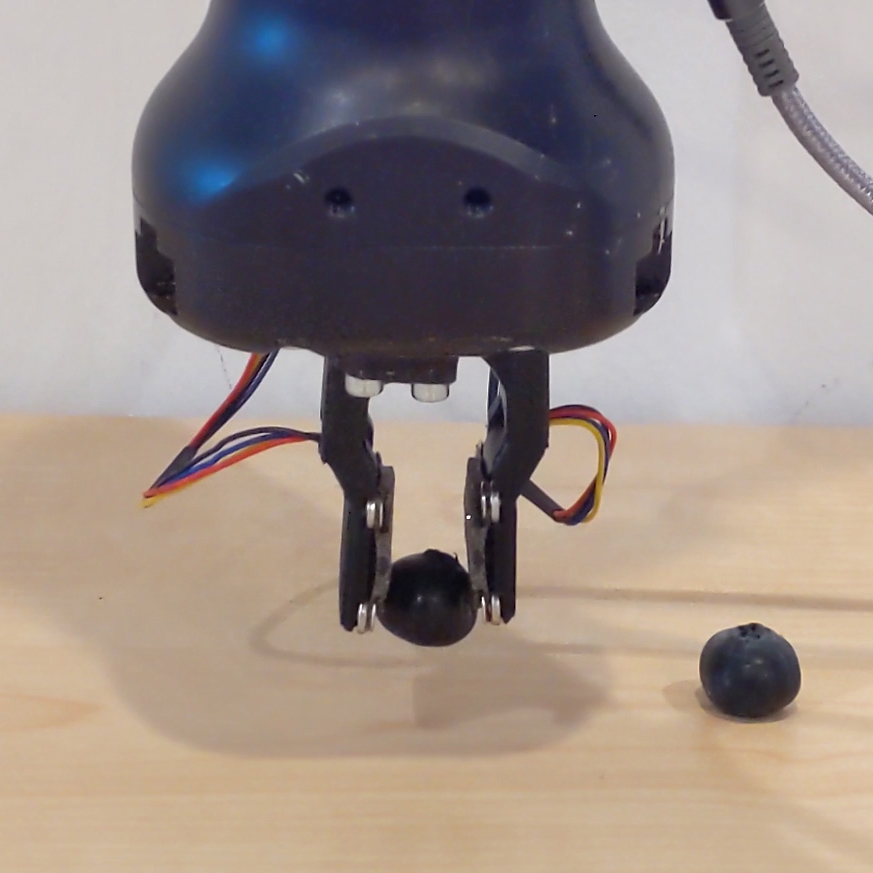ReSkin Could Help Researchers Discover a Sense of Touch
Aaron AupperleeMonday, November 1, 2021Print this page.

Picking up a blueberry or grape without squishing it isn't hard, but try teaching it to a robot. The same goes for walking on ice, turning a key to unlock a door or cooking a favorite dish.
When it comes to the senses, touch remains a challenge for artificial intelligence and robotics researchers.
Carnegie Mellon University and Meta AI (formerly Facebook AI) hope to change that through a new tactile sensing skin they believe will increase the sense of touch in robotics, wearables, smart clothing and AI. Called ReSkin, the technology is affordable, durable and easy-to-use. It harnesses advances in machine learning, soft robotics and magnetic sensing to create a skin that is versatile and as easy to apply as a bandage.
"I want this sensing skin to be so robust and simple that anyone could set it up and start gathering touch data within a day," said Tess Hellebrekers, a postdoctoral researcher at Meta AI who earned her Ph.D. from CMU's Robotics Institute in 2020.
Abhinav Gupta, an associate professor in the RI and the research manager at Meta AI who worked with Hellebrekers on ReSkin, said the technology could lead to an explosion of possible applications for tactile sensing. It will provide rich contact data for touch-based tasks like determining what something is, sensing movement and grasping an object. This could help in health care or in areas where dexterity to maneuver small, soft or sensitive objects is critical.
ReSkin costs less than $600 for 100 units and even less for larger quantities. It is 2 to 3 millimeters thick and can last for more than 50,000 interactions. Its sensors provide high resolution results and can detect slipping, throwing, catching and clapping. All this makes ReSkin ideal for use on robotic hands, tactile gloves, arm sleeves and even dog shoes, and helps researchers collect data that previously would have been difficult or impossible to gather.
"When it wears out, it can be easily peeled off and replaced with a new one," Gupta said.
ReSkin can easily be replaced because there are no wires between the skin and the sensing board. The sensing board only needs to be nearby. AI methods developed by Raunaq Bhirangi, a Ph.D. student in robotics at CMU and part of the ReSkin team, contribute to its ease of use. These methods enable the sensors to autocalibrate and allow the data to remain consistent even when the skin is replaced. ReSkin requires no hardware or software changes between sensor skins.
"Repeatability and replaceability are two of the biggest bottlenecks hindering widespread use of soft sensors in robotics," Bhirangi said. "With ReSkin, we use simple machine learning techniques to solve these problems and open a scalable and inexpensive tactile sensing module that can be used for a diverse set of applications."
Improvements in computer vision have helped robots and AI see and perceive the world as humans do. Natural language processing has given computers the ability to listen and speak. Touch is another step toward infusing AI and robotics with a sense of what it is like to be human.
"We want AI to understand the richness of the world," Gupta said. "Touch really helps you sense the world in a true form."
ReSkin is part of a broader research initiative by Meta AI into touch and tactile sensing that includes high-resolution tactile hardware, simulators, benchmarks and data sets. Facebook AI hopes improvements in touch unlock possibilities in augmented and virtual reality and lead to innovations in industrial, medical and agricultural robotics.
Read more about ReSkin in this blog post from Meta AI.
Aaron Aupperlee | 412-268-9068 | aaupperlee@cmu.edu
